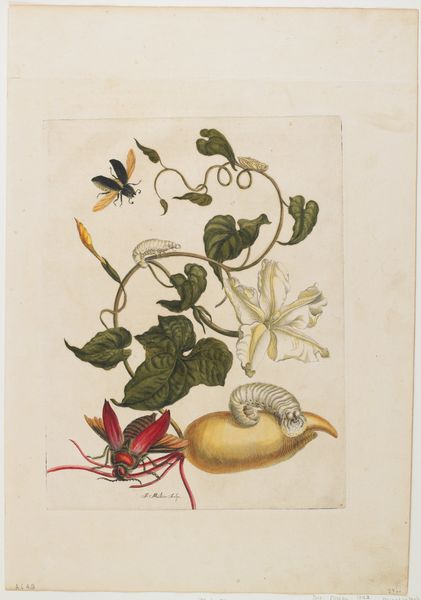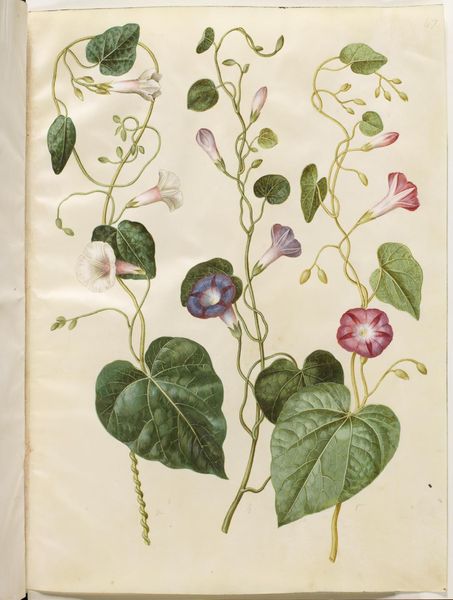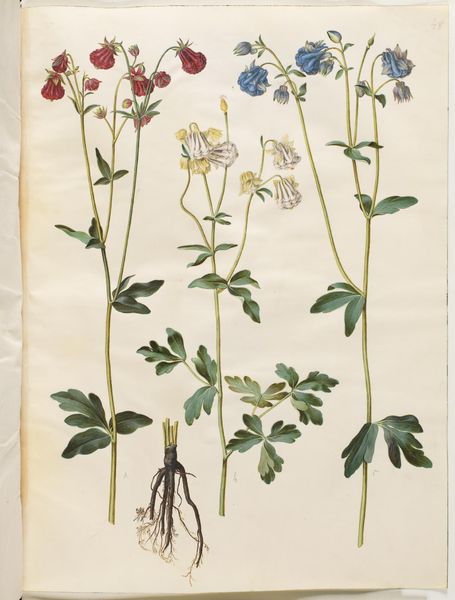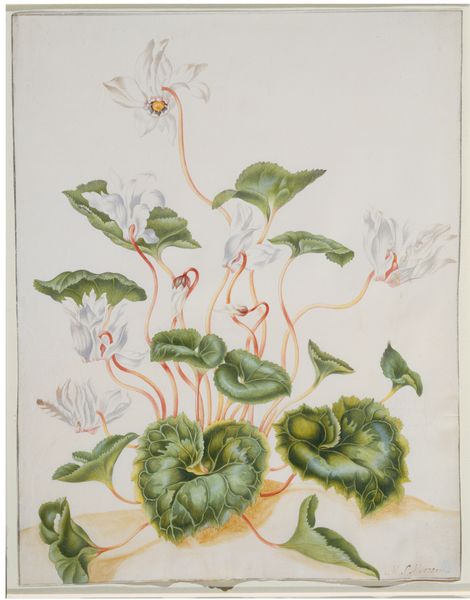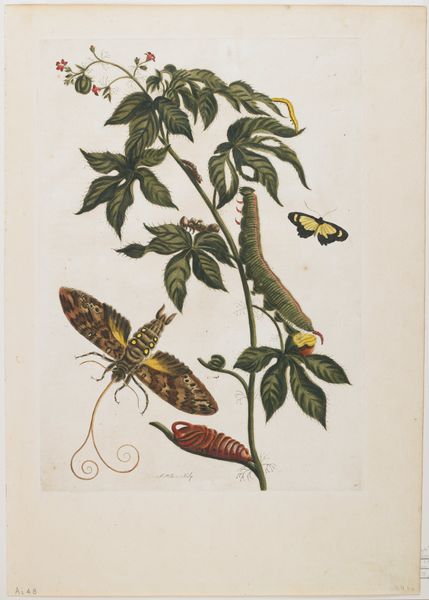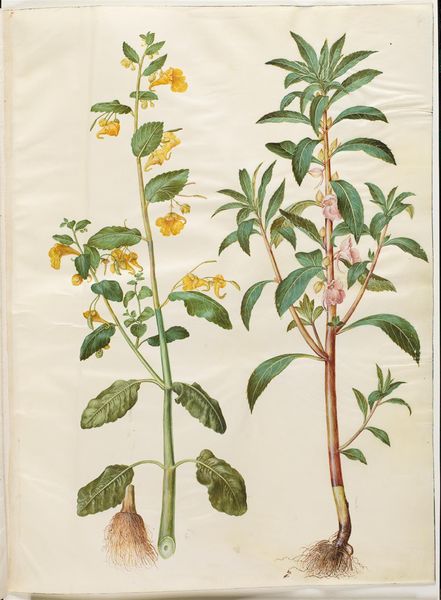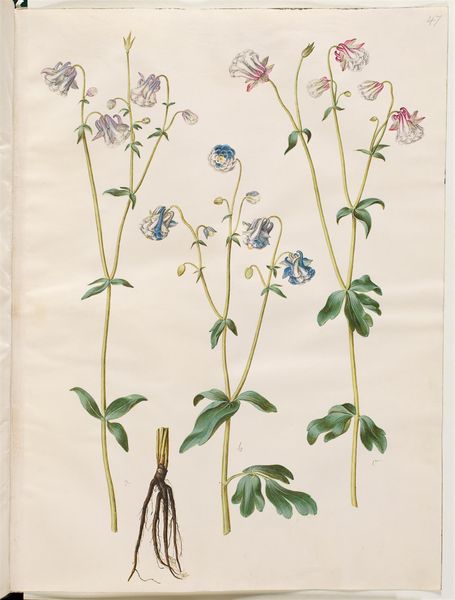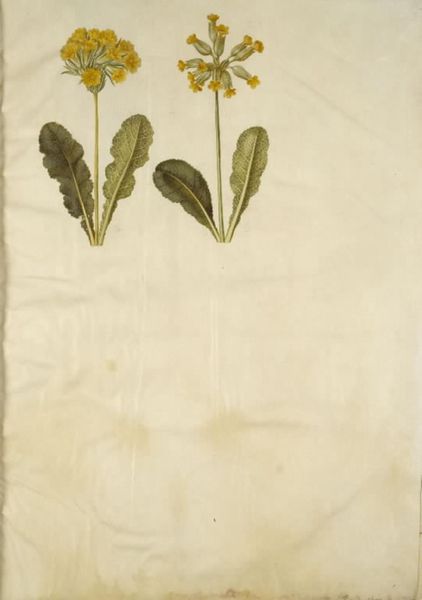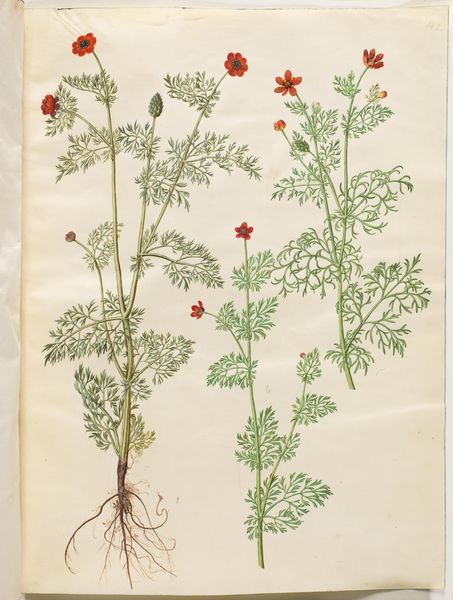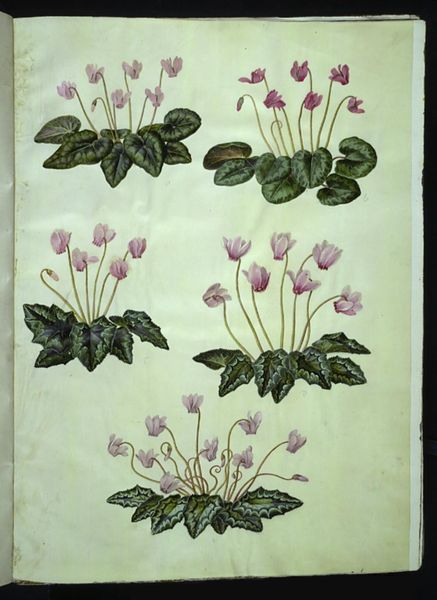
Erythronium dens-canis (ægte hundetand) 1649 - 1659
0:00
0:00
drawing, gouache, watercolor
#
drawing
#
water colours
#
gouache
#
watercolor
#
watercolor
Dimensions: 505 mm (height) x 385 mm (width) (bladmaal)
Curator: Well, here we have "Erythronium dens-canis," or "ægte hundetand," rendered in watercolor and gouache by Hans Simon Holtzbecker sometime between 1649 and 1659. Quite lovely, isn't it? Editor: It does possess a fragile kind of beauty! The color palette, so muted, almost gives it the feel of a botanical ghost story, if such a thing existed. There's also this quiet intimacy…a single flower in four distinct stages? Curator: Yes, there’s a curious flatness, almost a symbolic charting of the plant's life. "Dens-canis," meaning dog's tooth, refers to the shape of the bulb. These representations capture more than just the flower, they memorialize a process, embedding layers of knowledge in each image. It reflects the era’s passion for scientific observation intertwined with the artistic eye. Editor: Dog's tooth, you say? Hmm... They remind me more of tiny cyclamen; quite unassuming. It makes you wonder, why these particular blooms were deemed worthy of such meticulous representation. There must be stories tangled within the leaves... whispers of healing, perhaps? Curator: Likely so! Botanical art during this period often held medicinal significance, these were symbolic of certain health remedies. Beyond just aesthetics, this artwork might have been employed in practice—carrying meaning tied to physical or psychological aid. And consider that in art historical iconography, flowers symbolize fragility, ephemeral beauty, life and death. The Dog's Tooth violet's bulb and petals contain a duality - in them are signs of growth, and the inevitable entropic conclusion. Editor: True, these little flowers, presented like jewels on vellum. You said yourself, ephemeral! It almost feels like Holtzbecker wanted to halt this decay through precise rendering. A memento mori, perhaps. Curator: Exactly! I'm drawn to the plant’s tenacious existence – rising each spring despite external, mortal pressure. To be in the Staats Museum here in Copenhagen tells me, these plants outlast everyone. Editor: Right? It’s quite poignant when you put it like that. So much concentrated love given to one brief life, rendered centuries later still living. A true dog's tooth in time! Curator: Indeed! And that delicate gouache on the waxy bloom holds every nuance of color, light and shadow from long ago. It’s magical. Editor: Magical is a perfect descriptor to pause on here. The silent whisper of these colors… I will remember the ghostly beauty of these dogs' teeth blooming in my imagination today.
Comments
No comments
Be the first to comment and join the conversation on the ultimate creative platform.
